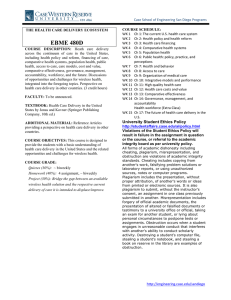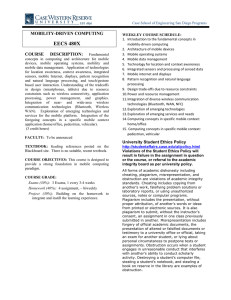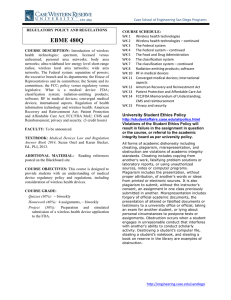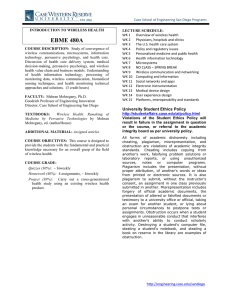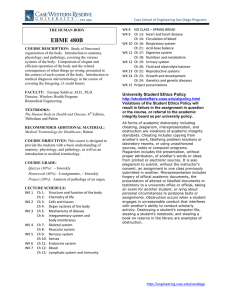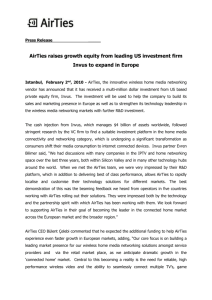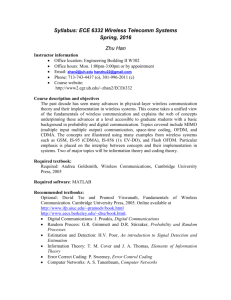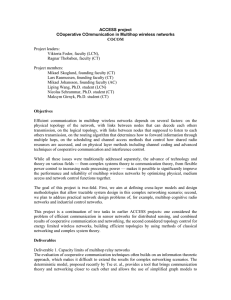Document 12041150
advertisement
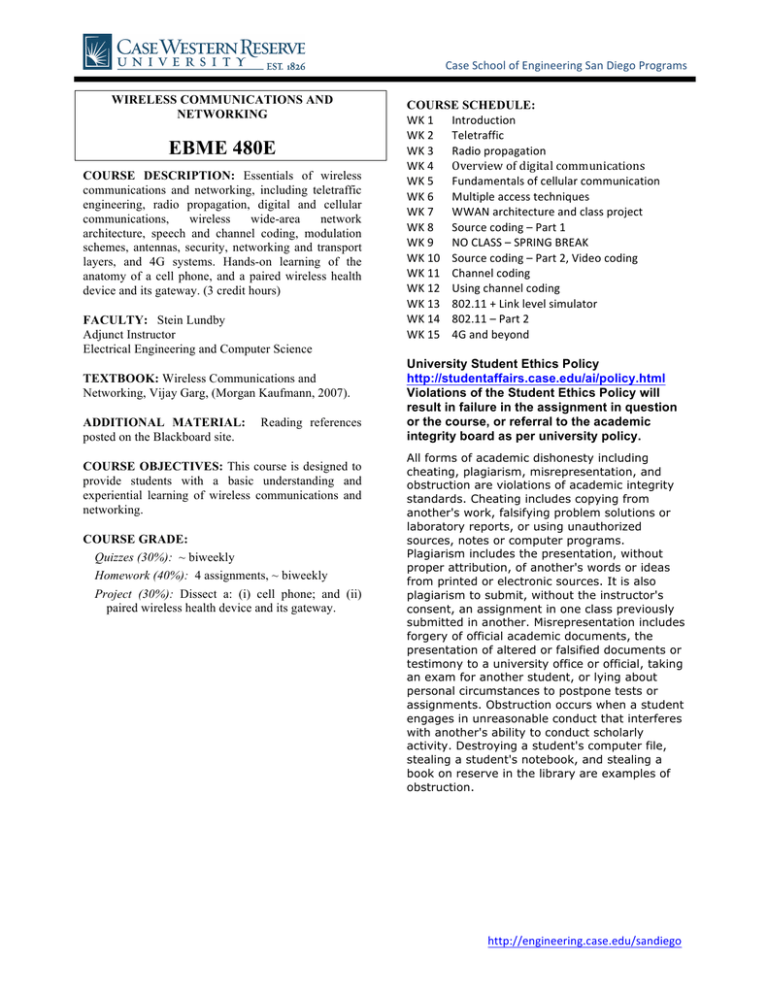
Case School of Engineering San Diego Programs WIRELESS COMMUNICATIONS AND NETWORKING EBME 480E COURSE DESCRIPTION: Essentials of wireless communications and networking, including teletraffic engineering, radio propagation, digital and cellular communications, wireless wide-area network architecture, speech and channel coding, modulation schemes, antennas, security, networking and transport layers, and 4G systems. Hands-on learning of the anatomy of a cell phone, and a paired wireless health device and its gateway. (3 credit hours) FACULTY: Stein Lundby Adjunct Instructor Electrical Engineering and Computer Science TEXTBOOK: Wireless Communications and Networking, Vijay Garg, (Morgan Kaufmann, 2007). ADDITIONAL MATERIAL: posted on the Blackboard site. Reading references COURSE OBJECTIVES: This course is designed to provide students with a basic understanding and experiential learning of wireless communications and networking. COURSE GRADE: Quizzes (30%): ~ biweekly Homework (40%): 4 assignments, ~ biweekly Project (30%): Dissect a: (i) cell phone; and (ii) paired wireless health device and its gateway. COURSE SCHEDULE: WK 1 Introduction WK 2 Teletraffic WK 3 Radio propagation WK 4 Overview of digital communications WK 5 Fundamentals of cellular communication WK 6 Multiple access techniques WK 7 WWAN architecture and class project WK 8 Source coding – Part 1 WK 9 NO CLASS – SPRING BREAK WK 10 Source coding – Part 2, Video coding WK 11 Channel coding WK 12 Using channel coding WK 13 802.11 + Link level simulator WK 14 802.11 – Part 2 WK 15 4G and beyond University Student Ethics Policy http://studentaffairs.case.edu/ai/policy.html Violations of the Student Ethics Policy will result in failure in the assignment in question or the course, or referral to the academic integrity board as per university policy. All forms of academic dishonesty including cheating, plagiarism, misrepresentation, and obstruction are violations of academic integrity standards. Cheating includes copying from another's work, falsifying problem solutions or laboratory reports, or using unauthorized sources, notes or computer programs. Plagiarism includes the presentation, without proper attribution, of another's words or ideas from printed or electronic sources. It is also plagiarism to submit, without the instructor's consent, an assignment in one class previously submitted in another. Misrepresentation includes forgery of official academic documents, the presentation of altered or falsified documents or testimony to a university office or official, taking an exam for another student, or lying about personal circumstances to postpone tests or assignments. Obstruction occurs when a student engages in unreasonable conduct that interferes with another's ability to conduct scholarly activity. Destroying a student's computer file, stealing a student's notebook, and stealing a book on reserve in the library are examples of obstruction. http://engineering.case.edu/sandiego
